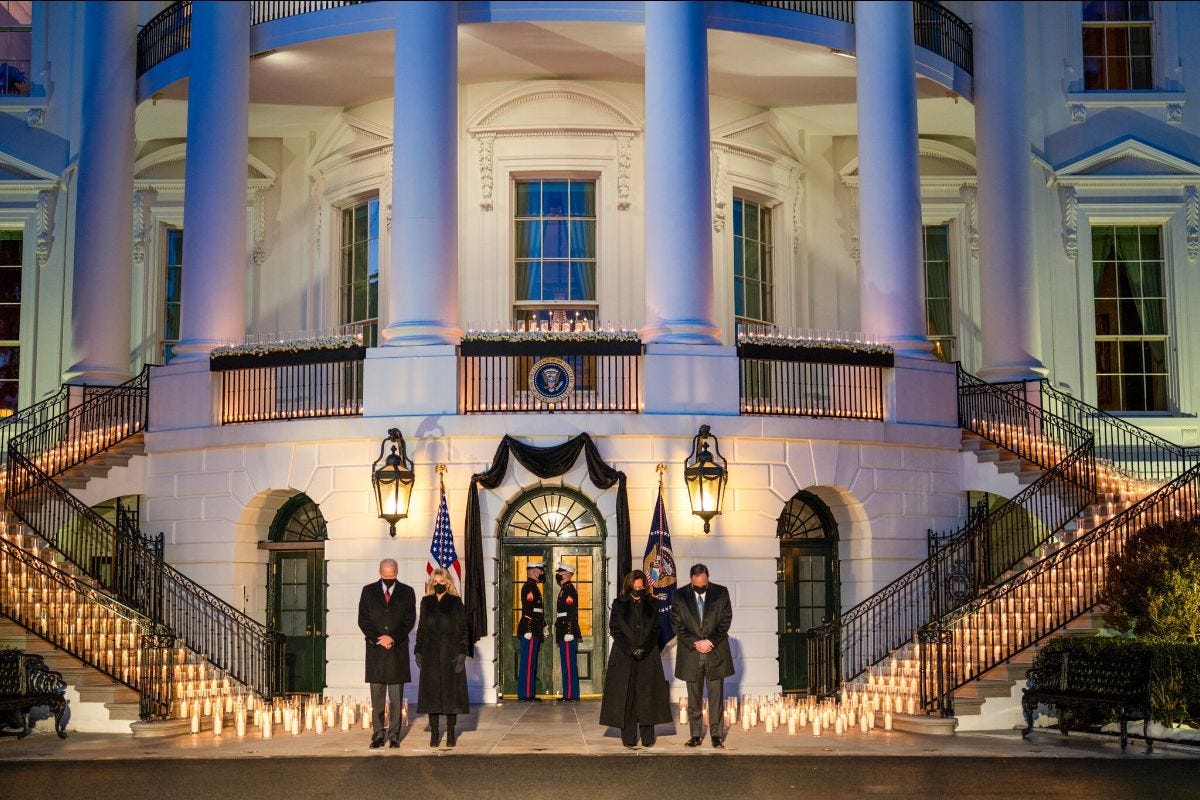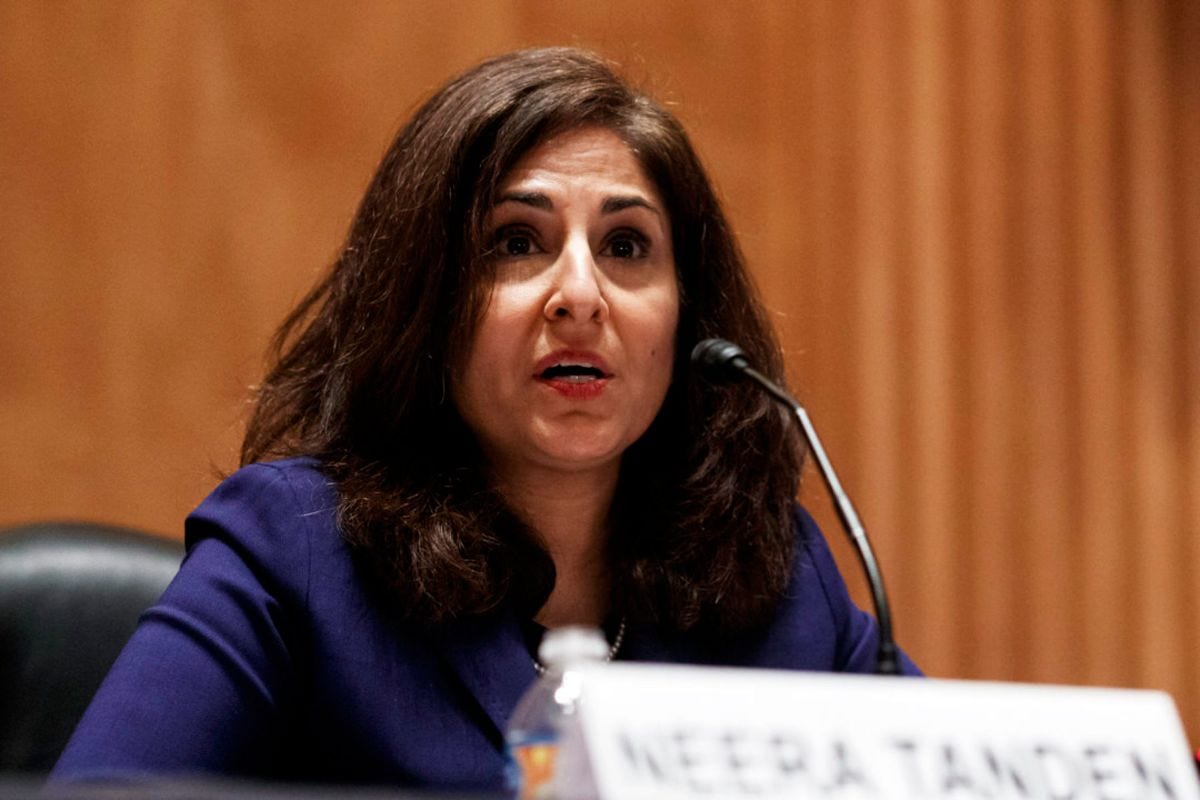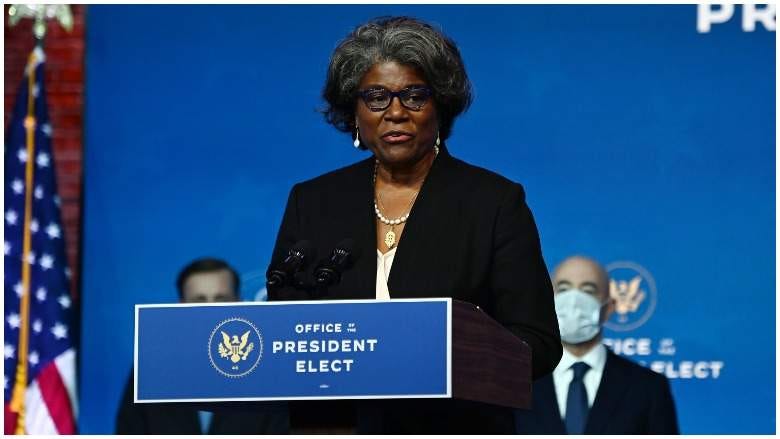Good morning! It’s Tuesday, February 23, 2021. Election Day 2022 is 623 days away. Election Day 2024 is 1,351 days away.
As U.S. marks grim coronavirus milestone, glimmers of hope emerge
The United States officially surpassed 500,000 coronavirus deaths on Monday, according to Johns Hopkins University.
The grim milestone comes as the nation approaches the first anniversary of pandemic life, a fresh reminder of how much has changed and how many have been lost in the past 12 months. But even as the country mourns those incomprehensible losses, glimmers of hope are striking through to blend with the lingering despair.
“There is light in the darkness,” President Joe Biden declared on Monday as he marked the half-million deaths. Here are three reasons to be hopeful about the future of the pandemic:
1. Cases are plummeting. According to the COVID Tracking Project, the 7-day average of new coronavirus cases in the United States is currently at about 64,000. That’s a 40% drop from where it stood — about 107,000 — two weeks ago, and a 75% drop from the early January peak of almost 250,000. The curve may not have been flattened, but it is on a sharp downward trajectory.
And it is not just happening in the United States: the pandemic is receding in many of the world’s other hotspots as well, the New York Times reports. And the drop in new cases is accompanied by a decrease in new deaths and hospitalizations. According to the Atlantic, there is no clear reason for why COVID-19 cases are plunging so fast, although experts suspect it is some combination of improved social distancing, seasonality, and the growing number of people who have achieved immunity either through infection or vaccination.

2. Vaccines are being distributed. The early pace of vaccinations in the U.S. was much-maligned. But, two months in, it has now quickly accelerated: according to Bloomberg, the nation has administered more than 64 million doses of vaccine, reaching a rate of about 1.4 million Americans per day.
“America’s vaccine rollout has been among the best in the world,” Axios declared, noting that the U.S. has given a first dose of the vaccine to 12% of its population — a higher percentage than all but five countries: Israel, the Seychelles, the United Arab Emirates, the United Kingdom, and Bahrain. “In fact,” the report added, “the U.S. is distributing doses three times as quickly as the EU, adjusted for population, and nearly five times as quickly as Canada.”
There are also more to come: the FDA will meet on Friday to begin considering Johnson & Johnson’s emergency use application for its vaccine candidate. An executive will testify today that, if the single-shot vaccine is approved, the company can deliver 20 million doses to the U.S. government by the end of March. Plus, the pace of deliveries of the Pfizer and Moderna vaccines “is about to take off,” according to the Associated Press: “About 145 million doses are set for delivery in the next 5½ weeks, with an additional 200 million expected by the end of May and a further 200 million by the end of July.”

3. The vaccines are working. News of the increased vaccine supply is only important if the vaccines are also effective in mitigating the virus. And early studies in some of the most vaccinated countries are showing that they are. In the United Kingdom, a study on the Pfizer vaccine found that one dose reduced the risk of a severe case of the virus by approximately 75%. After two doses, the level of protection against any form of disease rose to 85%.
But that’s not at all: an analysis in Israel found that the Pfizer vaccine was 89.4% effective there in preventing any laboratory-confirmed infection of COVID-19, one of the first indications that the vaccine could stop people not just from becoming sick from the virus — but from becoming infected at all. If supported by other studies, this would suggest that the vaccine can curb transmission of the virus as well as severe cases, a breakthrough possibility.
COVID-19 is not going away tomorrow (not by a long shot). And there are still more data to be had about the vaccines, and other reasons to remain cautious, such as the spread of new variants. But, taken together, the falling caseload, increasing vaccination pace, and high efficacy of the vaccines offer reasons to be optimistic after a year of mostly dread.

The Rundown
SCOTUS: “The Supreme Court on Monday rejected a last-ditch attempt by former President Donald J. Trump to shield his financial records, issuing a brief, unsigned order that ended Mr. Trump’s bitter 18-month battle to stop prosecutors in Manhattan from poring over his tax returns as they investigate possible financial crimes.” New York Times
TANDEN: “President Biden was on the cusp of his first Cabinet defeat Monday as two closely watched GOP senators announced their opposition to Neera Tanden, his pick to be the nation’s chief budget official, potentially dealing a major blow to an administration that has struggled to fill top posts across government.” Washington Post
IMMIGRATION: “The Biden administration is looking for ways to stave off a fresh humanitarian crisis at the southern border as the number of unaccompanied children arriving to seek asylum is beginning to rise again, this time amid a global pandemic, according to government officials and others familiar with the conversations.” Wall Street Journal
More coronavirus reading: The most hopeful thing I have read lately... “A Quite Possibly Wonderful Summer” The Atlantic
The most devastating thing I have read lately... “The youngest victims of a national calamity, and the people they left behind” Washington Post
Corrections
In Monday’s newsletter, I misstated the number of counties in the state of Texas and some of the details of the disaster order there. There are 254 counties in the state; all of them will have access to public assistance under President Biden’s major disaster declaration, but only residents of 77 counties will have access to individual assistance.
My apologies for the error and thanks to my Texan readers who pointed it out. I hope everyone reading this from the Lone Star State — and other areas affected by the winter storms — are staying safe and warm!
Daybook
All times Eastern.
White House
President Joe Biden will receive the President’s Daily Brief at 9:50 a.m. Then, at 1;15 p.m., he will meet virtually with a group of Black essential workers in a roundtable moderated by Domestic Policy Advisor Susan Rice. Watch
At 4 p.m., Biden will participate in a virtual meeting with Prime Minister Justin Trudeau of Canada, his first bilateral meeting with a foreign leader. The one-on-one session will be followed by a meeting including Biden, Trudeau, and their Cabinets, and then a joint statement delivered at 5:45 p.m. Watch
Announcements: Biden and Trudeau will unveil the “U.S.-Canada Partnership Roadmap,” a blueprint describing the commitment of the two nations to work together on COVID-19, climate change, diversity and inclusion, national security, and other issues.
Vice President Kamala Harris will join Biden for the President’s Daily Brief and his bilateral meeting with Trudeau.
White House Press Secretary Jen Psaki will hold a press briefing at 12 p.m.
Congress
The Senate will convene at 10:30 a.m. Following Leader remarks, the chamber will resume consideration of the nomination of veteran diplomat Linda Thomas-Greenfield to be Ambassador to the United Nations. The Senate will vote to confirm her at 11:30 a.m., followed by a cloture vote to advance the related nomination to make her the U.S. representative to the UN General Assembly.
After those votes, the Senate will recess until 2:15 p.m. to allow for weekly caucus meetings. The Senate will then hold 20 minutes of debate, divided between the two parties, on the nomination of former Agriculture Secretary Tom Vilsack for a second tour in that position. The Senate will vote to confirm Vilsack at 2:35 p.m., followed by a vote to confirm Thomas-Greenfield as the U.S. representative to the UN General Assembly. Watch
The House will convene at 2 p.m. Fifteen lawmakers from each party will be able to deliver one-minute speeches, and then the chamber will recess until about 4 p.m. At 6:30 p.m., the House will vote on six pieces of legislation. Watch
The bills: H.R. 264 (post office renmaing), H.R. 813 (post office renaming), H.R. 772 (post office renaming), H.R. 208 (post office renaming), H.R. 546 (the Effective Assistance of Counsel in the Digital Era Act), H.R. __ (the Puerto Rico Recovery Accuracy in Disclosures Act)
Congressional leaders will hold a moment of silence at 6:15 p.m. on the Capitol steps for the more than 500,000 Americans who have died from COVID-19. Watch
Congressional Committees
The Senate Energy and Natural Resources Committee will meet at 9:30 a.m. to hold a confirmation hearing on the nomination of Rep. Deb Haaland (D-NM) to be Secretary of the Interior. Watch
The Senate Judiciary Committee will meet at 10 a.m. to hear outside witnesses on the second day of its confirmation hearings on the nomination of D.C. Circuit Judge Merrick Garland to be Attorney General. Watch
Witnesses: Wade Henderson, the president and CEO of The Leadership Conference on Civil and Human Rights; Josh Blackmun, a professor at South Texas College of Law; Andrea Tucker, whose children Garland tutors at their D.C. public school; Ken Starr, the former Whitewater independent counsel; Donna Bucella, a former U.S. Attorney
The Senate Homeland Security and Governmental Affairs Committee and the Senate Rules Committee will hold a joint hearing at 10 a.m. investigating the law enforcement response to the January 6 attack on the U.S. Capitol. Watch
Witnesses: Acting D.C. Police Chief Robert Contee, former Capitol Police Chief Steven Sund, former Senate Sergeant at Arms Michael Stenger, former House Sergeant at Arms Paul Irving
The Senate Health, Education, Labor, and Pensions Committee will hold a confirmation hearing at 10 a.m. on the nomination of California Attorney General Xavier Becerra to be Secretary of Health and Human Services. Watch
The House Energy and Commerce Subcommittee on Oversight and Investigations will hold a hearing at 10:30 a.m. on how to expand the availability of COVID-19 vaccines. Watch
Witnesses: Pfizer CEO John Young, Moderna president Stephen Hoge, Johnson & Johnson vice president Richard Nettles, AstraZeneca vice president Ruud Dobber, Novavax vice president John Trizzino.
The Senate Intelligence Committee will hold a hearing at 2:30 p.m. on the SolarWinds cyber hack.
Witnesses: FireEye CEO Kevin Mandia, SolarWinds CEO Sudhakar Ramakrishna, Microsoft president Brad Smith, CrowdStrike CEO George Kurtz Supreme Court
The justices will hear oral arguments at 10 a.m. in Wilkinson v. Dai. Watch
The case: “One job of an appeals court is determining when immigrants are eligible for asylum,” WUTP legal contributor Anna Salvatore explains. “But when can the court assume that an immigrant’s testimony is credible? Today the justices will decide whether an immigration judge or the Board of Immigration Appeals must label the testimony ‘credible’ first.”
Thanks for waking up to politics! If you enjoy reading this newsletter, I’d be so grateful if you’d consider donating to help support me and my work. If you want to show off your support for Wake Up To Politics, you can also buy some merchandise.
Also: don’t forget to tell your friends and family to sign up for the newsletter at wakeuptopolitics.com. And if you have any questions or comments, feel free to email me at any time.







